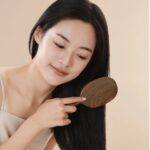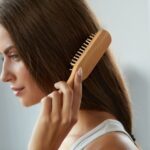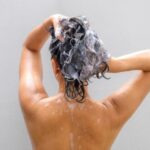Here are four common mistakes that women often make when it comes to hair cleansing:
1. Brushing hair when it’s wet
Many people still have the habit of brushing their hair immediately after washing it, unaware that this is a habit that needs to be stopped immediately. In fact, when wet, hair is at its weakest and most vulnerable state. Any mechanical action, no matter how gentle, can cause hair to break and lose its natural elasticity. To minimize damage, it is advisable to brush your hair before washing it to gently detangle it. If you must brush when it’s damp, opt for a wide-toothed comb to reduce friction and better protect the hair structure.
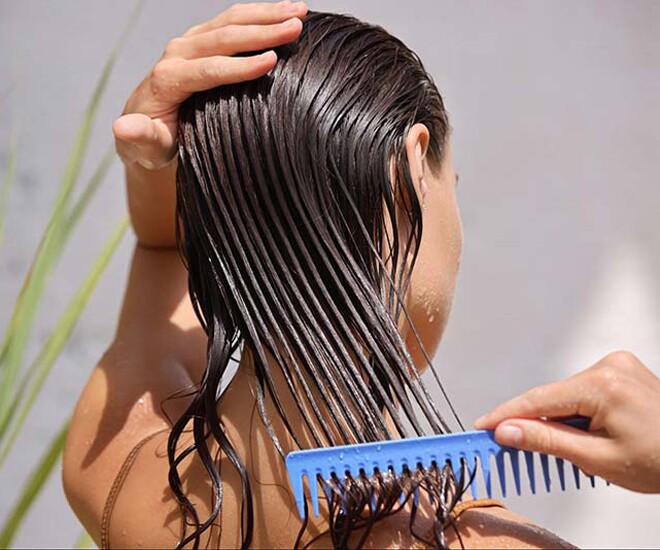
Brushing wet hair is a seemingly harmless habit, but it is the main culprit behind hair breakage and severe damage.
2. Air-drying hair
Some people believe that air-drying their hair after washing it is a safe option as they fear that hair dryers will make their hair dry and brittle. However, the truth is that this habit is not good for the hair and can even pose risks to scalp health. When wet, the hair structure is weak and prone to breakage. Leaving hair damp for too long can lead to hair damage, especially in humid environments. Moreover, wearing a helmet when the hair is not completely dry creates an ideal environment for fungi and bacteria to thrive, leading to scalp issues. In addition, tying damp hair increases tension on the hair shaft, causing headaches and making hair more prone to breakage.
The ideal solution is to use a fan to dry your hair if you have time or to use a hairdryer on low heat. Prioritize drying the roots and only dry your hair about 50-60%, then let it air-dry. This method not only helps retain the hair’s natural moisture but also minimizes heat damage.
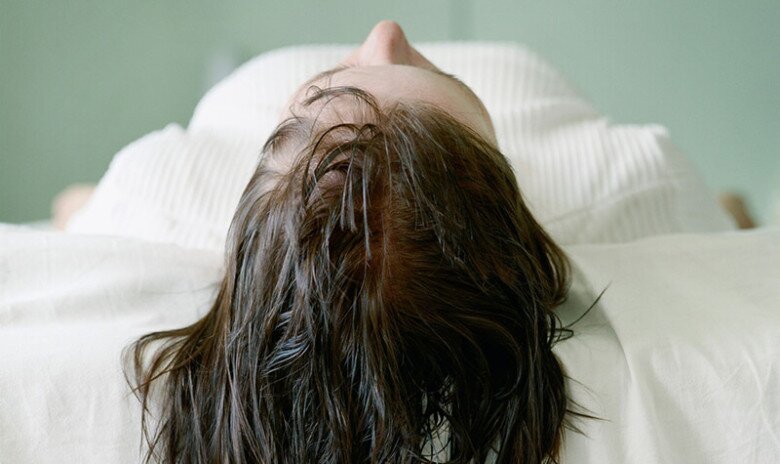
Air-drying hair may seem like a gentle approach, but it can lead to hair damage, tangles, and create a favorable environment for scalp fungi if left damp for too long.
3. Towel-drying hair vigorously
Many people have the habit of vigorously towel-drying their hair after washing it to speed up the drying process. However, this seemingly harmless action can cause hair to become tangled, fragile, and damaged. Vigorously rubbing or twisting hair with a tightly wrapped towel can damage the protective outer layer of the hair shaft, particularly affecting the shine and color of dyed hair, leading to dullness and lack of vitality.
To minimize damage, opt for a soft, absorbent cotton towel and gently pat your hair dry instead of rubbing it vigorously. Ideally, choose a towel that is 0.8 to 1 meter long, as this length provides better protection for your hair during the drying process. After use, wash the towel immediately or air-dry it in a well-ventilated area to prevent bacterial buildup, which can cause scalp issues.
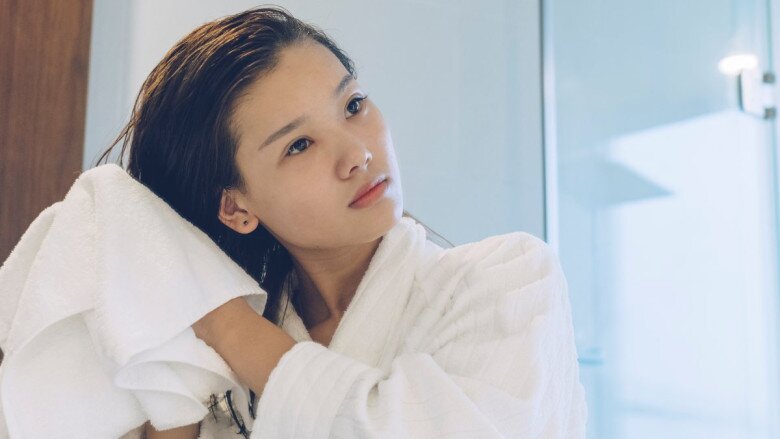
Vigorously towel-drying hair not only tangles the strands but also damages the protective outer layer of the hair shaft.
4. Sleeping with wet hair
Sleeping with wet hair is a seemingly harmless habit, but it is a “silent enemy” of your tresses. Many women wash their hair in the evening and fall asleep before it’s completely dry. As a result, they wake up not only with a headache but also with frizzy, dry, and unruly hair. According to experts, sleeping with wet hair not only takes away its natural shine but also depletes nutrients and disrupts the hair structure.
More dangerously, wet hair rubbing against the pillow for hours can lead to friction, causing hair breakage, split ends, and gradual thinning over time. In the long run, this can contribute to weak hair and even baldness if not addressed promptly.
The simplest solution is to ensure your hair is completely dry before going to bed. Opt for low heat settings on your hairdryer and gently apply a hair treatment to protect your hair throughout the night.

Sleeping with wet hair is a detrimental habit that can lead to hair breakage, frizz, loss of nutrients, and potentially thinning hair or baldness over time.
These habits can ruin your hair.
Additionally, many women often make the following seven common mistakes when washing their hair:
Washing hair too frequently: Overuse of shampoo strips the hair of its natural oils, which are essential for maintaining moisture and protecting it from damage.
Not wetting hair thoroughly before shampooing: Rinsing hair with water first helps remove dirt, allowing shampoo to lather and distribute evenly.
Applying hair conditioner after shampooing: In fact, pre-shampoo conditioning can add volume to the hair, especially for fine hair that needs moisture.
Applying too much shampoo to the ends: The ends tend to be drier, so applying excess shampoo there can make them drier; focus on the scalp instead, as it produces more oil.
Scrubbing the scalp with your fingernails: This can cause scratches, infections, hair tangles, breakage, and weak hair follicles.
Washing hair with hot water: Hot water weakens hair and makes it prone to breakage; lukewarm water is best, followed by a cold-water rinse to seal the cuticle and promote healthy hair.
Applying conditioner to the scalp: This can clog hair follicles, slow hair growth, and increase oil production.

By following these simple hair washing principles, you can achieve thick, voluminous, and healthy hair at home without needing to visit a salon.


























